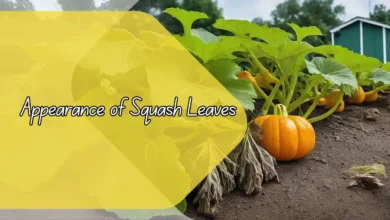
Winter Beauty: The Majestic Maple Tree
Discover the enchanting beauty of the majestic maple tree in winter. Learn about its unique features, how to care for it during the colder months, and why it is a must-have in any winter garden.
What Makes the Maple Tree Stand Out in Winter?
The maple tree is known for its stunning display of vibrant colors in the fall, but its beauty doesn’t fade in the winter. As the leaves fall, the tree’s graceful silhouette is revealed, adding an elegant touch to the winter landscape. The bare branches of the maple tree create a striking contrast against the white snow, making it a focal point in any garden.
In addition to its visual appeal, the maple tree also offers practical benefits in winter. Its dense branches provide shelter for birds and other wildlife, making it a valuable asset to the ecosystem during the colder months.

How to Care for Your Maple Tree in Winter?
To ensure your maple tree thrives during winter, it is important to take proper care of it. Start by watering the tree regularly, especially during dry spells. This will help prevent the roots from drying out and ensure the tree remains healthy throughout the winter months.
Another important aspect of winter care for maple trees is protecting them from extreme cold temperatures. Consider wrapping the tree in burlap or using a tree wrap to shield it from harsh winds and frost. It is also essential to mulch around the base of the tree to help insulate the roots and protect them from freezing.

Why is the Maple Tree a Must-Have in Your Winter Garden?
The maple tree is a versatile and resilient species that adds beauty and character to any winter garden. Its striking appearance and vibrant colors make it a standout feature in the landscape, creating a sense of warmth and charm during the colder months.
In addition to its visual appeal, the maple tree is also relatively low-maintenance, making it ideal for busy gardeners who want a beautiful yet easy-to-care-for tree in their garden. With proper care and maintenance, the maple tree can thrive year-round, providing beauty and interest in all seasons.

How to Choose the Right Maple Tree for Your Garden?
When selecting a maple tree for your winter garden, consider factors such as size, color, and shape. There are countless varieties of maple trees to choose from, each offering unique characteristics that can enhance the beauty of your garden.
Some popular choices for winter gardens include the Japanese maple, with its elegant foliage and graceful form, and the sugar maple, known for its brilliant fall colors and sturdy branches. Look for a tree that suits your garden’s style and climate, and be sure to plant it in a location where it will have ample space to grow and thrive.

How to Preserve Maple Leaves for Winter Decor?
If you want to incorporate the beauty of maple leaves into your winter decor, consider preserving them using a simple glycerin solution. To do this, mix one part glycerin with two parts water and submerge the leaves in the solution for several days until they become pliable and saturated.
Once the leaves are preserved, you can use them to create stunning winter wreaths, table centerpieces, or garlands. Their vibrant colors and intricate shapes will add a touch of natural elegance to your home decor during the winter months.

How to Attract Birds to Your Maple Tree in Winter?
To attract birds to your maple tree in winter, consider providing them with food sources such as bird feeders filled with seeds or suet cakes. Position the feeders near the tree branches to make it easier for birds to access them and create a safe and inviting environment for them to feed.
You can also add bird baths or water sources near the maple tree to provide birds with a place to drink and bathe. By creating a welcoming habitat for birds, you can enhance the beauty of your winter garden and enjoy the sights and sounds of feathered visitors throughout the season.
Conclusion
The majestic maple tree is a true gem in the winter garden, with its graceful silhouette, vibrant colors, and practical benefits. By caring for your maple tree during the colder months and selecting the right variety for your garden, you can enjoy the beauty and charm of this tree year-round. Whether you’re looking to enhance your winter landscape or attract birds to your garden, the maple tree is a must-have addition that will bring joy and beauty to your outdoor space.
FAQs
Can maple trees survive in cold climates?
Maple trees are hardy and can withstand cold temperatures, but certain varieties are better suited for specific climates. Make sure to choose a maple tree variety that is suitable for your region’s winter conditions.
Do maple trees lose their leaves in winter?
Yes, maple trees are deciduous and will shed their leaves in the fall. This allows the tree to conserve energy during the winter months and prepare for new growth in the spring.
How often should I water my maple tree in winter?
Water your maple tree regularly throughout the winter, especially during dry spells. Check the soil moisture level and adjust your watering schedule accordingly to ensure the tree remains healthy and hydrated.
Can I plant a maple tree in a small garden?
Yes, there are dwarf and compact varieties of maple trees that are suitable for small gardens. Look for a variety that fits your space constraints and plant it in a location where it will have enough room to grow without being crowded.
What are some common pests and diseases that affect maple trees in winter?
Maple trees can be susceptible to pests such as aphids, scale insects, and spider mites, as well as diseases like leaf spot and powdery mildew. Monitor your maple tree regularly for signs of infestation or disease and take prompt action to address any issues that arise.








